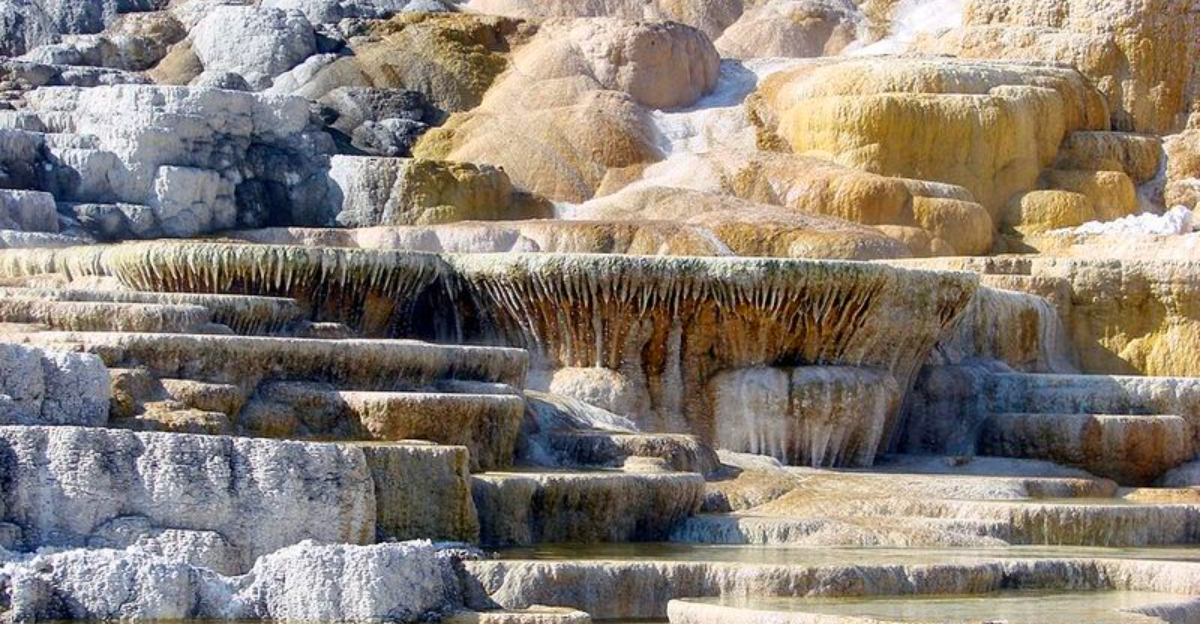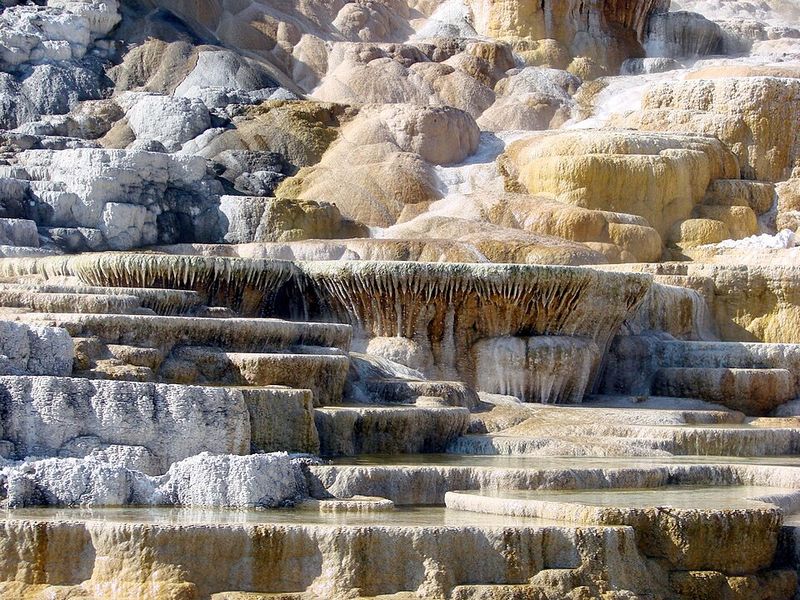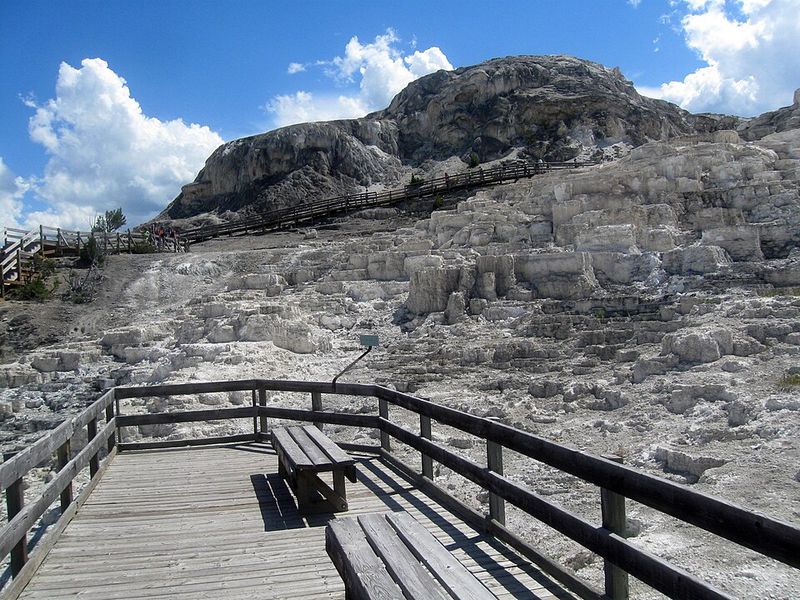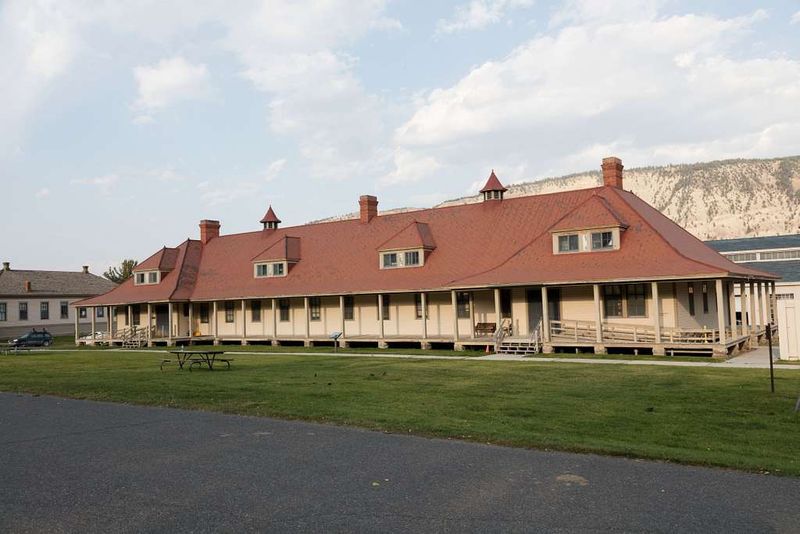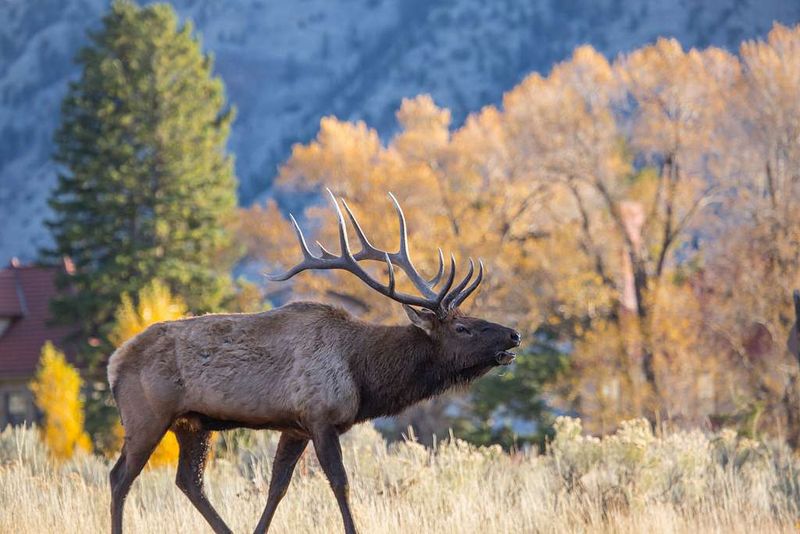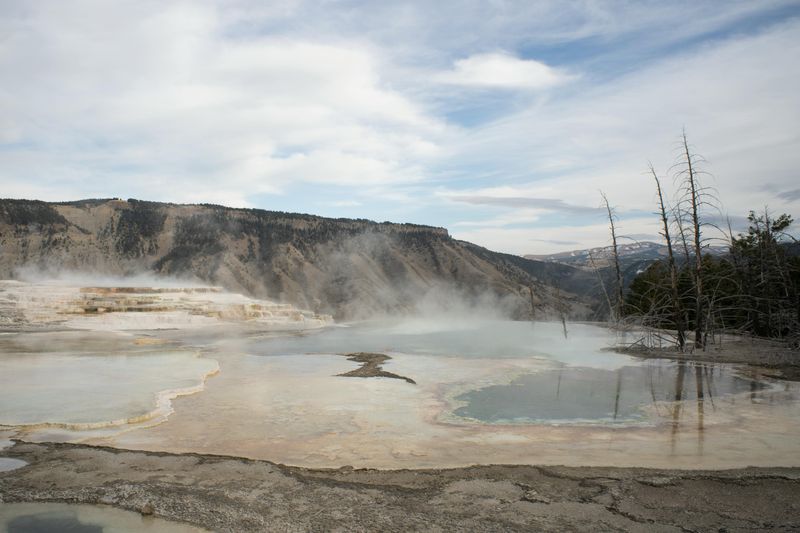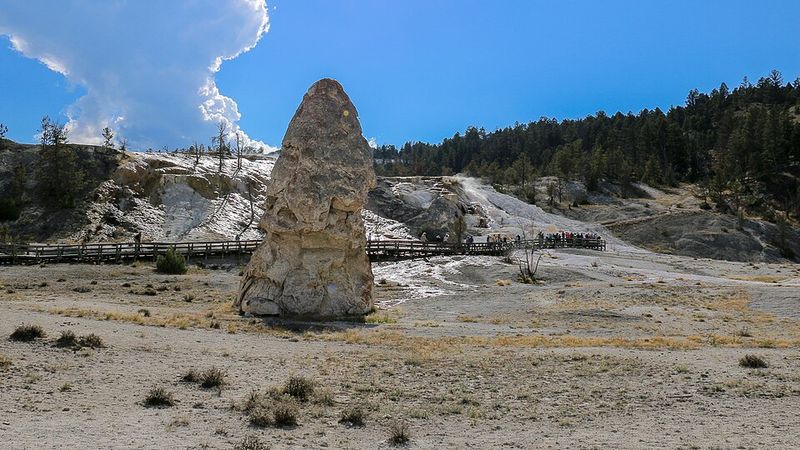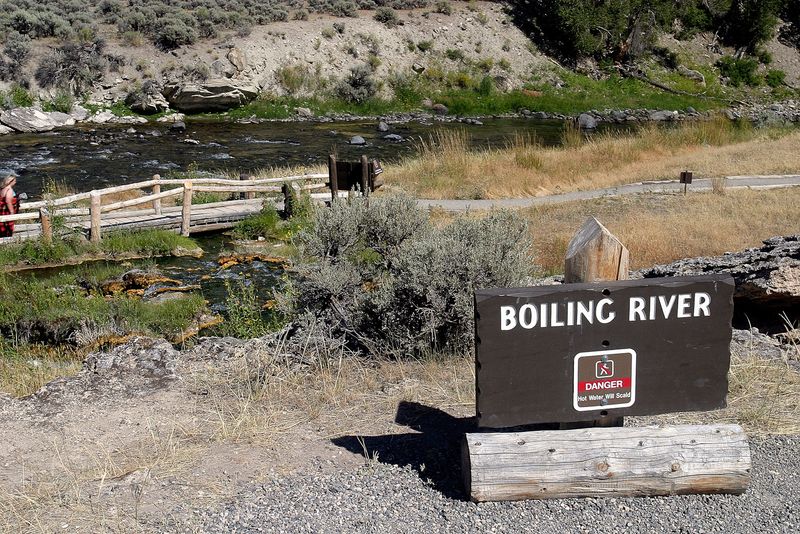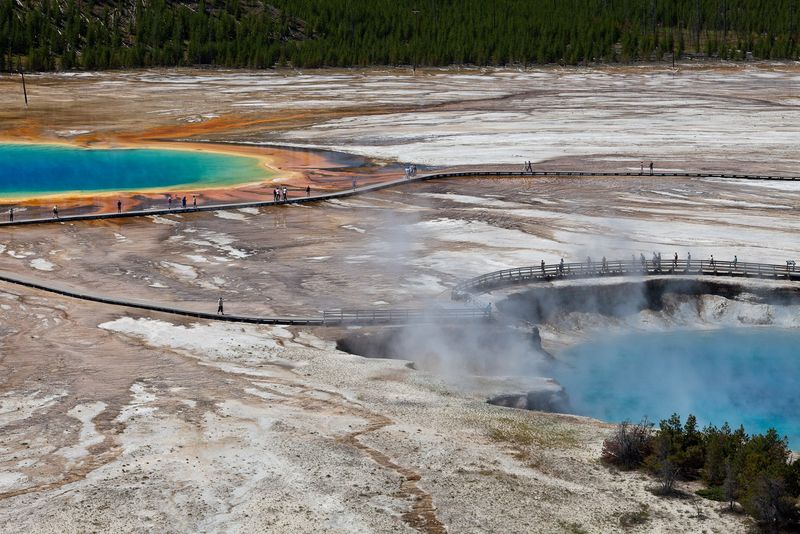Mammoth Hot Springs stands as one of Yellowstone’s most unique thermal features, where hot water creates stunning white and orange terraces made of travertine stone. Unlike the park’s famous geysers, these springs constantly reshape themselves, with flowing water one day and dry rock the next. Visiting this natural wonder means witnessing geology in action, as minerals build up layer by layer to form stair-like formations. Whether you’re exploring the colorful terraces or spotting elk wandering nearby, Mammoth offers an unforgettable glimpse into Earth’s powerful forces.
What Makes Mammoth Hot Springs Unique
Calcium carbonate creates magic at Mammoth Hot Springs, where underground hot water dissolves limestone before surfacing at around 170 degrees Fahrenheit. As the water cools, it deposits travertine minerals that build up over thousands of years into spectacular stair-like terraces. This process makes Mammoth completely different from Yellowstone’s geyser basins.
Hot water travels underground from the Norris Geyser Basin through fault channels, picking up minerals along the way. The constant flow means terraces change shape regularly—a spring flowing today might go dry tomorrow. This ever-shifting landscape keeps geologists fascinated and visitors returning to see what’s new.
Located in Yellowstone’s northern region, this sprawling complex demonstrates how thermal activity and geology work together to create breathtaking natural architecture that’s always evolving.
The Terraces: Upper, Lower & Highlights
Boardwalk loops wind through Upper and Lower Terraces, giving visitors safe access to steaming pools and colorful mineral crusts up close. Microbial mats paint the landscape in shades of orange, yellow, and brown, thriving in the warm waters. Each terrace level offers different views and surprises.
Minerva Terrace once ranked among the most photographed features here, with water cascading over multiple tiers in dramatic fashion. Flow patterns have shifted over time, though, sometimes leaving it dry. Orange Mound Spring captivates with vivid rust-orange colors created by cyanobacteria that love the cooler 170-degree water.
Because the geothermal system stays active, new springs can appear while others disappear entirely. Every visit brings slightly different scenery, making Mammoth a place where no two trips feel quite the same.
Fort Yellowstone & The Historic District
History runs deep at Mammoth, which serves as Yellowstone’s administrative headquarters within a 158-acre historic district. Fort Yellowstone’s original Army barracks, lodging, and offices tell the story of early park management. From 1886 to 1918, the U.S. Army ran Yellowstone operations before handing control to the National Park Service.
Many buildings sit on old terrace formations, blending human history with geological wonders. The district earned a spot on the National Register of Historic Places, recognizing its importance in American conservation history. Walking among these structures offers context about how park management and tourism evolved.
Visitor facilities, offices, and lodging occupy buildings that witnessed Yellowstone’s transformation from wilderness to protected national treasure. Exploring this area reveals how people worked to preserve one of America’s most iconic landscapes.
Wildlife, Surroundings & Bunsen Peak
Elk treat the terraces like their personal lounging area, often sprawling across the warm mineral deposits in groups. Bison occasionally wander near roads, and birds take advantage of thermal edges during winter when warmth means survival. Mammoth’s location in Yellowstone’s northern corridor makes wildlife encounters common and memorable.
Bunsen Peak rises to 8,564 feet just south of the springs, offering hikers a popular destination with a roughly 2.1-mile trail. Panoramic views from the summit stretch across Roosevelt Country, rewarding those who make the climb. The surrounding landscape features forested slopes, ancient lava flows, and thermal corridors connecting Mammoth to Norris and beyond.
From the terraces, visitors can gaze across diverse terrain that showcases Yellowstone’s incredible geological variety in one sweeping vista.
Visiting Tips & Timing
Year-round access makes Mammoth special, though spring, summer, and fall bring the easiest conditions for exploration. Mornings and early evenings create dramatic steam effects when cooler air meets hot water, perfect for photography. Weather permitting, winter visits offer unique perspectives with snow-covered terraces and fewer crowds.
Always stay on boardwalks to protect fragile mineral deposits and avoid dangerous scalding water hidden beneath thin crusts. Safety rules exist for good reason—thermal areas can cause severe burns. Plan to spend 1.5 to 3 hours looping both terrace levels, allowing time for photos and observation.
Geothermal activity shifts constantly, so dry areas might flow again or active springs could stop. Expect surprises and embrace the unpredictability that makes Mammoth such a dynamic natural wonder worth visiting multiple times.
Liberty Cap and Ancient Formations
Standing 37 feet tall, Liberty Cap represents a dormant hot spring that stopped flowing long ago, leaving behind a cone-shaped monument to ancient thermal activity. This striking formation got its name because it resembles liberty caps worn during the French Revolution. Geologists estimate it took centuries to build.
Unlike active springs still depositing travertine, Liberty Cap shows what happens when water stops flowing through a particular vent. The cone’s smooth, weathered surface contrasts sharply with the rough, actively growing terraces nearby. It serves as a reminder that Mammoth’s landscape has been changing for thousands of years.
Visitors often photograph this landmark near the entrance to the terrace area. Liberty Cap provides perspective on how thermal features evolve, die, and leave lasting marks on Yellowstone’s remarkable geology.
Safety and Thermal Hazards
Scalding water lurks beneath innocent-looking ground throughout Mammoth’s thermal areas, making boardwalks absolutely essential for visitor safety. Recent incidents remind everyone that stepping off trails can lead to severe burns when thin crusts break. In July 2024, a teenager suffered serious injuries after ground gave way over a thermal pond.
Even celebrity visitors face consequences for ignoring rules—Pierce Brosnan pleaded guilty in 2024 to trespassing in a thermal area and paid $1,500 in fines. These rules protect both visitors and the fragile mineral formations that take millennia to develop. Water temperatures reach 170 degrees or higher, hot enough to cause immediate injury.
Respecting boundaries keeps everyone safe while preserving these incredible features for future generations to enjoy and study in their natural state.
Mammoth’s Evolving Geothermal Activity
Yellowstone’s geothermal system never sleeps, constantly creating new features while shutting down others across the park’s thermal areas. In March 2025, a new steam vent appeared about a mile north of Norris Geyser Basin, emitting steam at 171 degrees and becoming visible from nearby roads. Such events demonstrate how Mammoth and surrounding areas continue evolving.
Underground plumbing shifts when earthquakes or pressure changes redirect hot water through different channels. What flows vigorously today might stop tomorrow, while dormant areas can suddenly spring back to life. This unpredictability makes each visit unique and keeps scientists studying the complex hydrothermal system.
Mammoth exemplifies Yellowstone’s dynamic nature, where geological processes happen on human timescales rather than requiring millions of years to observe meaningful changes in the landscape.
